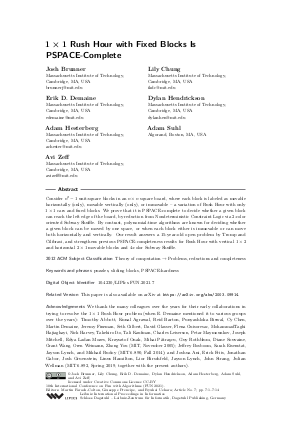LIPIcs.FUN.2021.7.pdf
- Filesize: 0.73 MB
- 14 pages

 Creative Commons Attribution 3.0 Unported license
Creative Commons Attribution 3.0 Unported license








Feedback for Dagstuhl Publishing